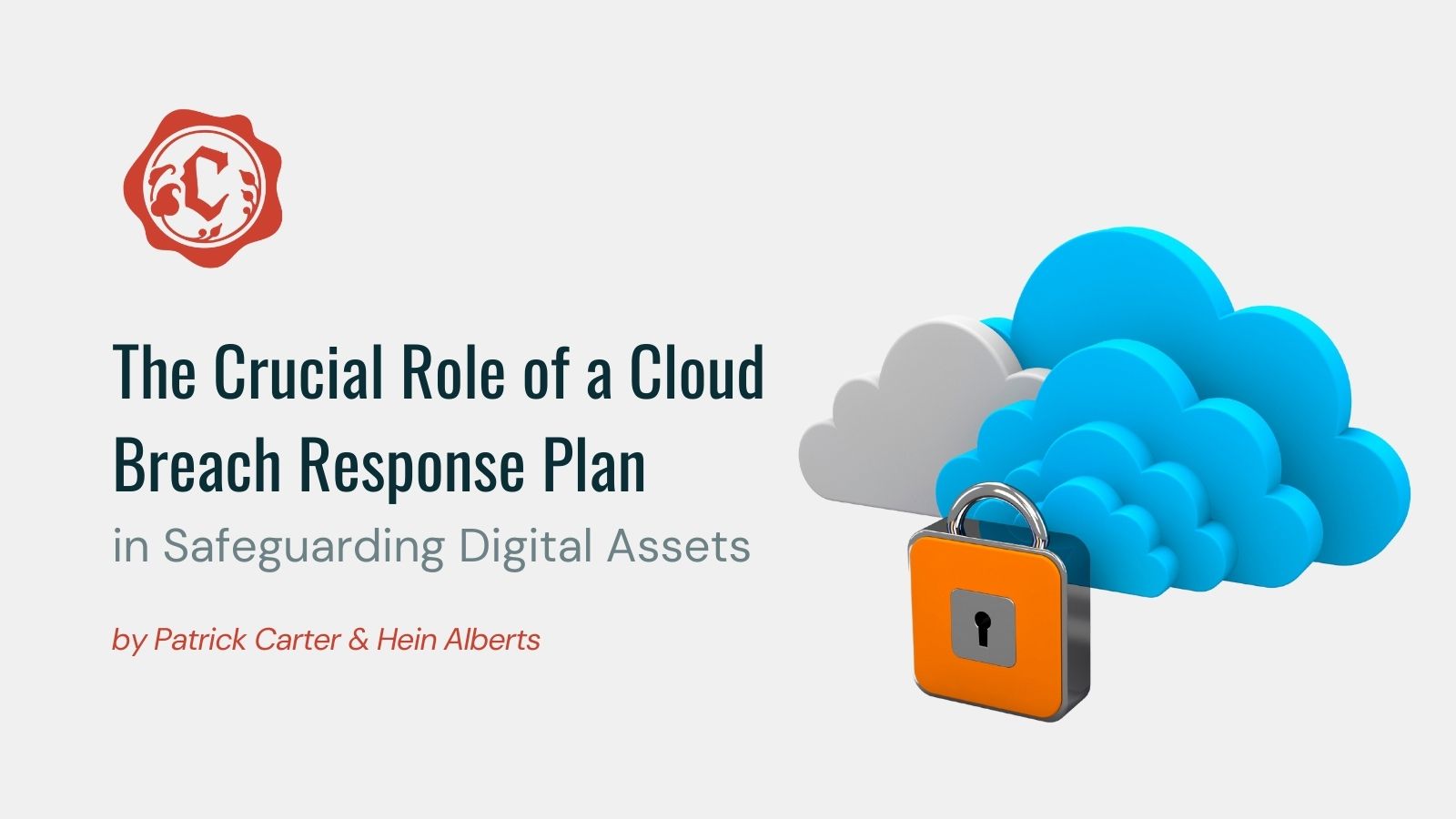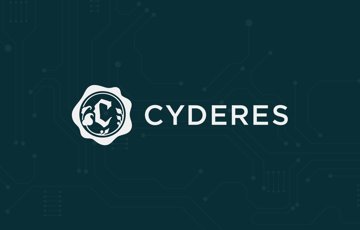Article contributed by Patrick Carter and Hein Alberts
In the contemporary landscape of digital business operations, organizations are progressively dependent on cloud services for storing and managing their sensitive data. Amidst this shift, the shadow of cybersecurity threats grows increasingly ominous, posing significant challenges to data security. Among these threats, the potential for a cloud breach stands out as a particularly pressing concern, given its ability to inflict far-reaching damage on an organization's integrity, financial stability, and public image. In this article, we delve deeper into the critical importance of devising a comprehensive cloud breach response plan. We aim to unravel the complex layers of this issue and highlight why such a strategy is indispensable in today's digital era for robustly safeguarding digital assets. This exploration will encompass a spectrum of considerations ranging from proactive preparedness to post-incident learning, all essential for fortifying an organization against the multifaceted nature of cybersecurity threats.
Strategic Framework and planning
Proactive Preparedness
The cornerstone of a cloud breach response plan is proactive preparedness. Organizations leveraging cloud storage are often the focus of cyber adversaries looking to exploit vulnerabilities. A robust response plan, formulated in advance, is pivotal in mitigating the impact of a breach. This preparedness goes beyond risk assessment; it encompasses comprehensive planning and regular security audits designed to identify and pre-emptively tackle potential vulnerabilities.
Learning from Incidents for Continuous Improvement
Each cloud breach, regardless of its scale, is a repository of crucial learnings. An effective response plan integrates mechanisms for thorough post-incident analysis, pinpointing root causes, and capturing lessons learned. This cycle of learning and adaptation is vital, enabling organizations to evolve and fortify their defenses against the ever-changing landscape of cybersecurity threats.
Strengthening Cybersecurity Culture
The strength of an organization’s cybersecurity largely hinges on its human elements. The response plan underscores the necessity of cultivating a robust cybersecurity culture, with a strong focus on employee training and awareness. Such initiatives ensure that every team member becomes a vigilant sentinel, adding a critical layer of defense against potential breaches.
Regular Security Audits and Drift Management
Consistent security audits play a crucial role in maintaining the integrity of cloud defenses. These audits, coupled with effective drift management strategies, ensure that security measures remain aligned with evolving threats and organizational changes. Regular audits provide a systematic approach to identifying and rectifying security gaps, ensuring the organization's security posture remains robust and responsive.
Operational Resilience and Response
Minimizing Downtime and Financial Impact
In the event of a cloud breach, managing downtime is paramount. An adept response plan is critical in curtailing the duration of operational disruptions, thereby enabling swift restoration of business functions. The financial implications of extended downtime are significant, with potential impacts on revenue and long-term financial health. A pre-established response plan equips organizations with efficient recovery strategies, effectively reducing financial losses.
Preventing Escalation and Containment
The initial stages following a cloud breach are crucial for curbing further escalation. A comprehensive response plan lays out a systematic approach for rapid containment, focusing on isolating affected systems and minimizing damage. This proactive stance is key not only in limiting the breach's scope but also in preventing unauthorized access across the network, thus protecting essential assets.
Transparent Communication During and After a Breach
Transparency in communication is vital in the wake of a cloud breach. Effective response plans include protocols for timely and clear communication with stakeholders, including employees, customers, and regulatory bodies. This transparency helps maintain trust, manage reputational risk, and ensures regulatory compliance. Post-breach communication should be informative, addressing the breach's implications and outlining steps taken to prevent future occurrences.
Immediate Incident Response and Recovery Plans
The backbone of operational resilience is the immediate activation of incident response and recovery plans. These plans should detail specific actions for various breach scenarios, enabling a rapid and coordinated response. Key elements include identifying the breach's source, securing affected systems, and restoring services. A well-defined recovery plan not only accelerates the return to normal operations but also aids in mitigating the overall impact of the breach.
Data Security and Integrity
Ensuring Data Integrity and Confidentiality
In today's digital era, data integrity and confidentiality are of utmost importance. A breach can lead to the compromise of critical and sensitive information, with far-reaching consequences. An effective response plan underscores the significance of safeguarding data integrity and confidentiality. It guides organizations in swiftly restoring compromised data using secure backups and implementing robust measures to avert future breaches. This proactive approach is essential in maintaining the sanctity of sensitive information and ensuring ongoing trust in the organization's data management practices.
Protecting Customer Trust and Reputation
An organization's reputation, a valuable intangible asset, is highly susceptible to the fallout from a cloud breach. Such incidents can erode customer trust and damage the reputation that has been carefully cultivated over time. A response plan that prioritizes prompt and transparent action is key in mitigating this reputational harm. Effective communication with stakeholders, acknowledging the breach's occurrence, and detailing remedial actions are pivotal steps in rebuilding confidence and trust.
Encryption and Access Control Mechanisms
A cornerstone of data security is the implementation of robust encryption and access control mechanisms. These are critical components of a response plan, ensuring that data remains secure and accessible only to authorized personnel. Encryption provides a strong layer of protection for data at rest and in transit, while access control helps prevent unauthorized entry and data breaches. Together, they form a formidable barrier against potential security threats.
Data Monitoring and Anomaly Detection
Continuous monitoring of data and the detection of anomalies are crucial for early breach identification and prevention. A comprehensive response plan includes advanced monitoring tools that can detect unusual patterns indicative of a security incident. By promptly identifying these anomalies, organizations can quickly respond to potential threats, limiting their impact and protecting the integrity of their data.
Legal Compliance and Global Standards
Legal and Regulatory Compliance
In today's regulatory environment, where data protection laws are increasingly stringent, organizations bear a significant responsibility to safeguard customer data and comply with privacy legislation. A comprehensive cloud breach response plan is essential for adhering to these legal and regulatory mandates following an incident. Key elements of such a plan include prompt breach notification, transparent reporting to authorities, and active cooperation with regulatory bodies. Adherence to these practices not only helps in avoiding substantial fines but also mitigates other legal repercussions, ensuring that organizations maintain their regulatory integrity and public trust.
Navigating Global Data Protection Regulations: GDPR, HIPAA, and Others
The complexity of compliance increases manifold when operating across borders, given the diverse and often stringent global data protection regulations like GDPR in Europe and HIPAA in the United States. A response plan must be tailored to navigate these multifaceted regulations, ensuring global compliance. This involves understanding the specific requirements of each regulation, such as consent, data subject rights, and cross-border data transfer rules, and integrating them into the organization’s breach response procedures.
Compliance Auditing and Reporting
Regular compliance auditing and thorough reporting are pillars of legal adherence in cloud operations. These processes involve systematically reviewing and documenting compliance with various data protection laws and standards. A robust response plan should include provisions for periodic audits, which help identify and rectify potential compliance gaps. Additionally, the plan should outline the procedures for accurate and timely reporting, a crucial step in maintaining transparency with regulatory authorities and stakeholders.
Legal Implications of Data Breaches
The legal implications of a cloud breach can be extensive, ranging from financial penalties to more severe legal actions. An effective response plan must address these potential legal outcomes, providing guidance on legal consultations, handling litigation, and managing legal risks. Understanding the legal landscape, both domestically and internationally, is crucial for an organization to navigate the aftermath of a breach effectively and minimize its legal impact.
TAKE THE FIRST STEP IN TRANSFORMING YOUR CLOUD SECURITY PROGRAM
Schedule a time to connect with our team of leading experts for an assessment of your cloud security architecture.
For more cybersecurity tips, follow Cyderes on LinkedIn and Twitter.



